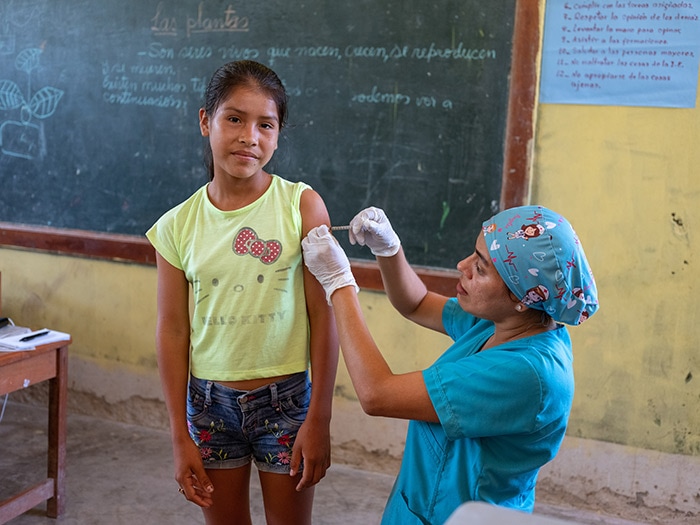Global HPV Vaccination

A health worker vaccinates a girl in Peru against HPV.
Credit: ©UNICEF/U.S. CDC/UN0724532/Goupil
Human Papillomavirus (HPV) is a vaccine-preventable infection that can lead to cervical cancer, which is the fourth most common cancer among women worldwide. CDC works with partners to help protect those most at risk from cervical cancer.
About 90% of cases and deaths from cervical cancer occur in low- and middle-income countries.
Cervical cancer claims the lives of more than 300,000 women worldwide each year. This common female cancer is almost always caused by the human papillomavirus (HPV), but is almost completely preventable with a safe and effective HPV vaccine and screenings.
In 2020, about 90% of new cases and deaths from cervical cancer occurred in low- and middle-income countries, where there is limited access to HPV vaccination, preventative screenings, and treatment. More than 30% (63 out of 194) of the world’s countries do not have HPV vaccination included in their national immunization programs.
HPV vaccination is a cost-effective and feasible public health intervention that saves lives.
It is estimated that increasing HPV coverage in girls will avert more deaths per person vaccinated than any other immunization activity.
The Cervical Cancer Elimination Initiative calls for vaccinating 90% of girls worldwide by age 15, along with screening and treatment.
In addition to preventing cervical cancer, the HPV vaccine has other benefits, including preventing genital warts and other forms of cancer caused by HPV.
What CDC is Doing Globally
Without changes to prevention and control, annual cervical cancer deaths may rise to over 400,000 by the year 2035. CDC works with partners to increase HPV vaccination coverage to protect women around the world from cervical cancer.
CDC supports:
- Development of evidence-based HPV vaccination policy and guidelines
- Implementation guidance, such as multi-country peer-to-peer HPV learning workshops
- Country programs and decision-making bodies by providing information on HPV program sustainability, feasibility, impact, and cost
- Operational HPV research and improving understanding among key stakeholders
- Evaluations of HPV programs, like the national HPV vaccination programs in Zimbabwe, Senegal, and Tanzania